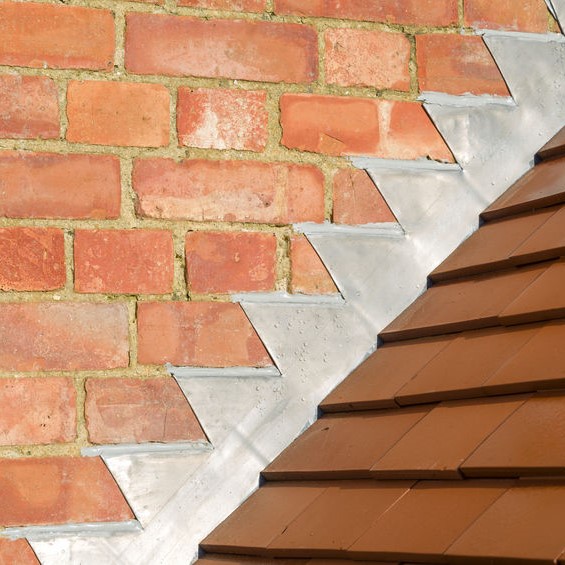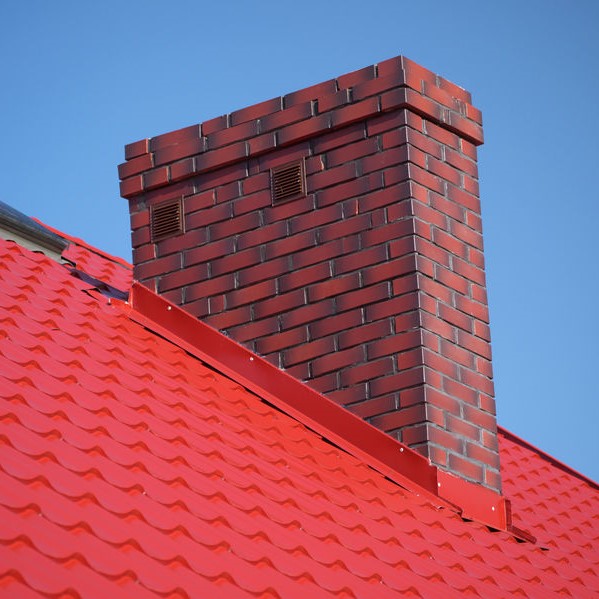
Roof Flashing along your roof
How do you fix roof flashing from Sugar Land Premier Roofing. Before we answer that, let’s review what roof flashing is first. Every roof has areas where the roof plane and a vertical surface meet. For example, the roof meets the chimney, dormers, skylights, and vents. While the roof is the component to keep a home dry, safe, and secure, those areas are often the weakest and prone to leaking.
Roof flashing is made from thin galvanized steel material and is installed by the roofing contractor to direct water away from those critical areas such as the chimney, dormers, skylights, and vents. Is roof flashing necessary? Absolutely! With roof flashing, the water runs down the flashing, onto the shingles and to the gutters. Otherwise, it would find its way to the roof decking, seep through to the attic, and into your home.
Where is the flashing on a roof?
As described above, roof flashing is installed by the roofing contractor where the roof plane meets vertical surfaces like a chimney, dormers, skylights, and vents. It is typically installed to overlap the roofing material. However, for a roof to be aesthetic, the head wall flashing extending over the roofing material will be covered with another layer of the roofing material.
Do all roofs have flashing?
Unless it is a hip style roof, all roofs should have flashing in places as we have discussed here. What is a hip style roof? This type of roof is “tent” style, all sides gently slope down toward the walls and doesn’t have any vertical walls like a chimney or another roof plane. A hip style roofing should have a metal drip edge along the eaves.
How Long Should Roof Flashing Last?
Roof flashing has a can last up to twenty years or longer, depending on the installation of the flashing and the climate and maintenance of the roof. The quality of flashing material will make a difference in the lifespan. The thinner the galvanized metal the weaker the flashing. A top grade, thick roof flashing could last as long as 80 years without borrowing any unexpected natural disaster.
How Do You Fix Roof Flashing?
Roof flashing is part of the roof and should be installed or replaced by a professional roofing contractor. When a new roof is installed or when roof repairs are made, if the existing roof flashing is in excellent condition, it can be reused, however, we recommend it that it not be. When getting quotes on roof repair or replacement, the homeowner should verify with the contractor if they are installing new roof flashing or plan to use existing. If they are using the existing, they shouldn’t be charged for new roof flashing.

Final Words on Roof Flashing
Roofing flashing and waterproofing work together to protect a roof from leaks. If roof flashing is leaking, then the waterproofing is not doing its job. Things that you can do to make sure your roof is safe, sound, and waterproof:
- Keep tree branches, leaves, and limbs off the roof.
- Replace broken, curled, damaged, or missing shingles.
- Check roof flashing periodically, repair or replace it, as necessary.
Roof flashing is inexpensive when you compare the cost of repairing a roof or installing a new roof. Some roof flashing examples your home should have are:
Drip Edge
- There are two drip edge flashing types: One that provides the gutter edge protection, the other is to protect the rake edge. Drip edge flashing purpose is to channel water off the roof and keep water away from the fascia. It is attached to the roof prior to the roofing felt being installed.
Penetration
- Penetrations for cooling, heating, plumbing, ventilation, or other roofing penetrations should have metal flashing to seal the penetration. Sometimes, a rubber flashing, similar to a rubber boot, maybe used instead of metal, which is normal around plumbing vents.
Gutter
- Gutter roof flashing is recommended by roofing professionals when shingle repairs or replacement are being done. If there are decorative roof flashing detail attachments to the gutter flashing that are using screws or spikes, overlay new gutter flashing to the drip edge.
Valleys
- Valley roof flashing is installed when two roof planes intersect so that the water is redirected to flow off the roof and into gutters. Valleys can be where two roof planes meet at different heights, usually a multi-story home.
Vertical Walls
- Same as valley flashing, vertical wall roof flashing directs water off the roof where it meets with a vertical wall such as a chimney, dormers, skylight, or where roof levels change.
Your Home Is Your Biggest and Most Important Investment As this is your most important investments, it is essential to always keep in mind that your roof is protecting your home, the entire structure. It keeps the walls upright and all together, with the foundation, makes for a solid structure that you and your family can feel safe and secure. Call Sugar Land Premier Roofing at 832-581-9234 today for your roof flashing.

